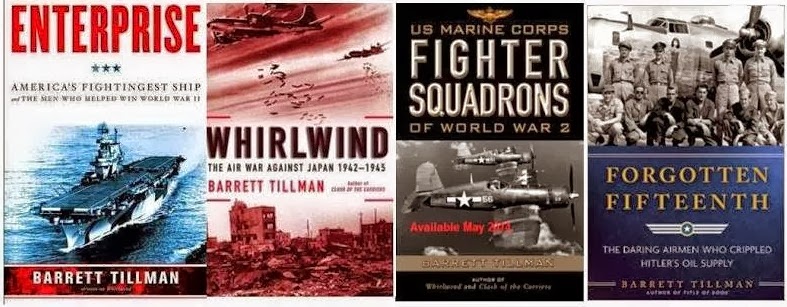School
shootings are nothing new.
The
first U.S. incident recorded online occurred in Virginia in 1840 when a law
professor was mortally wounded by a student.
However, 76 years earlier, in 1764, four Delaware Indians shot, slashed,
and clubbed ten white students to death in Pennsylvania. That remained the American record for a school mass killing almost 200 years, until the University of
Texas massacre in 1966.
Some
definitions may be necessary. For
instance, the same year as the sniper attack in Austin, five people were
murdered in an Arizona beauty college.
But the huge majority of school attacks occur in academic
institutions—high schools and colleges.
Here’s
a breakdown by decades, based on Wikipedia entries.
19th
century (1840 to 1900): 31 dead in 37 attacks (Average 0.83 deaths per
incident.)
1900s:
14 dead in 15 incidents Avg:
0.93
1910s:
12 dead in 19 incidents Avg:
0.63
1920s: 5 dead in 10 incidents Avg: 0.50
1930s:
10 dead in 9 incidents Avg: 1.11
1940s:
11 dead in 8 incidents Avg: 1.37
1950s:
13 dead in 17 incidents Avg: 0.76
1960s:
44 dead in 18 incidents Avg: 2.44
1970s:
37 dead in 30 incidents Avg: 1.23
1980s:
49 dead in 39 incidents Avg: 1.25
1990s:
88 dead in 62 incidents Avg: 1.41
2000s:
107 dead in 62 incidents Avg: 1.72
2010s:
156 dead in 145 incidents Avg:
1.07
The
foregoing list appears to include the deaths of perpetrators although some
internal contradictions were noted.
The
database includes accidental shootings, as in a 1961 incident in high-school
play with a .22 used “as a sound effect.”
In 2016 a Texas policeman shot another while intervening in a school
dispute. In an extreme example, in 1952
a New York student shot a school dean rather than part with photos of girls in
swim suits. Other examples note gang
violence on campus.
School
attacks usually involve additional casualties, including 64 wounded in the
1960s, mainly at Austin. However, as at
the Las Vegas massacre last October, often it is difficult or impossible to
know how many injuries resulted from gunfire and how many from other causes in
the panic and confusion. A partial
example: of the 23 injured at Virginia Tech in 2007, apparently 17 suffered
gunshot wounds.
In
any case, a quick glance at the chronological listing shows a clear pattern:
Typically school attacks resulted in less than one death through the 1920s,
with a high of 2.4 per incident in the 1960s, falling to well under 2.0
thereafter.
The
six deadliest incidents since 1966 accounted for 115 deaths among 454 in that
period, or one-quarter of the total.
In
the 1990s there was a 59% increase in attacks over the previous decade with an
80% increase in deaths.
What
accounts for the huge rise since the 1990s?
Apparently
the increase was not related to availability of semi-automatic rifles, most
notably the Armalite-designed AR-15.
Colt marketed the Sporter model in 1964 but evidently the type did not
appear in school shootings for decades. In fact, an examination of the guns used in
the deadliest school shootings shows a remarkable variety, including
19th-century technology with shotguns and bolt-action rifles.
In
one instance the murderer stole a family member’s police-issued firearms.
Weapons
in the six worst incidents:
Texas 1966 (17): bolt-action rifle
Texas 1966 (17): bolt-action rifle
Colorado
1999 (13): carbines, handguns, shotguns
Minnesota
2005 (10): “Grandfather’s police weapons” (pistol and shotgun)
Virginia
2007 (32): Glock and Walther pistols
Connecticut
2012 (26): AR-15 clone and Glock pistol
Florida
2018 (17): AR-15
Deaths
of the murderers are not included in the above six tolls.
Several
factors bear upon school killers other than weapons. They include a reduced rate of committing
potential killers to mental institutions—and then-Senator “Slow Joe” Biden’s
1990 “gun-free school zone” legislation, signed by GHW Bush. The law was overturned by the Supreme Court
five years later (United States v. Lopez)
because it was irrelevant to interstate commerce. But it was re-enacted in 1996 addressing the
commerce issue.
Meanwhile,
nearly 230 school shooting incidents have been reported since 1997.
Questions and Answers
After
the Columbine massacre in 1999, the Secret Service report on school shootings
noted several common factors:
Most
were planned, with other people having knowledge but remaining silent.
No
useful personality profile applied but many or most killers felt bullied or had
low self esteem, and frequently suffered mental issues. (A more recent survey indicated an extremely
high proportion were drug users).
Despite prompt law enforcement responses, most shooting
incidents were stopped by means other than law enforcement. (Suicide or “civilian” intervention.)
Some commentators ask about metal detectors in schools. Opinion seems divided. Aside from cost, the technology requires trained operators, and should be
positioned at every entrance with one or more enforcers to deal with contraband. But while detectors may reveal attempts to
sneak knives and guns into school, a dedicated assailant will blow past the
device or possibly shoot or stab the operator on the way inside.
(Knives in schools are seldom addressed but in Kunming, China, in
2014 eight Islamists killed 31 people using only blades. Nearly 150 victims survived injuries.)
An increasingly common discussion involves a school lockdown
with students kept behind locked doors.
But a clever assailant would wait until the interval between classes or,
perhaps “better” yet, when school lets out.
Even if most students make it to a safe area, others inevitably will be
caught in hallways or in the open with nowhere to go.
The
NRA has always held “The answer to a bad guy with a gun is a good guy with a
gun.” That seems self-evident: while the
victims huddle and die, they await men with guns to come solve the
problem. But with police response times
typically matching the duration of most mass shootings, it seems a zero-sum
game. Clearly, the fastest response is school
staff possessing the skill, knowledge, and willingness to use weapons close at
hand.
Technically,
18 states allow teachers or staff to be armed on-campus (with official
permission) but few of those are implemented: they include liberal bastions
California, Massachusetts, New York, New Jersey, and Oregon.
The
NEA “educators” are solidly opposed to armed staff in schools by an
overwhelming 68 percent. Ironically,
that’s one point less than a recent online poll showing Real Americans favor
the concept.
So
what should the policy involve?
It’s
not up to the police to divert scarce resources to guarding schools. In fact, at two of the worst school attacks,
on-scene deputies failed to purse the killers: at Columbine High in Colorado
(1999) and most recently in Florida. A
badge does not ensure there’s a fighting heart behind it or a moral brain above
it.
To
quote one law-enforcement friend: “If people want to have children, the parents
and schools need to protect their kids.
The cops have too much to do as it is.”
Retired
army officer Dave Grossman is well known for his advocacy of “sheepdogs.” Trained, capable guardians of the flock who
can defend the defenseless. He notes
that there have been very few deaths in school fires in more than 50 years but
we continue holding fire drills.
Arson and
explosives remain the deadliest agents of school killings. In 1927 the Bath School bombing in Michigan
killed 38 children and six adults—a greater toll than any school shooting.
(In a
worse example of arson murder, in 1990 a jilted lover killed 87 people at a New
York social club. His weapons were a plastic bucket with $1 worth of
gasoline, and a match.)
Apparently
the last significant school fire occurred in Chicago in 1958.
Training and Preparation
So why not hold active-shooter drills? Rather than meekly hunkering under a desk, awaiting a bullet in the cranium, teachers and students should be trained to respond quickly and violently: swarm the gunman, take him down, and stomp him to rags and tatters. If he has an accomplice, repeat as necessary.
The
training equipment and time requirements are minimal. A football tackling dummy would suffice, but
a trainer in a protective suit (the kind used to train police dogs) would be
even better.
The
obvious Solution:
Allow
teachers and school staff to carry pistols, all day every day—and night. Establish meaningful qualifications and
training with at least four recertifications annually.
Require
the sheepdogs to keep their weapon on them full time: no stashing in a desk or
locker. (Police chiefs, patrol officers, SWAT, FBI and BATF all have left guns in restrooms or unlocked vehicles.) For maximum safety and security,
perhaps wear the pistol unloaded with one or two magazines on the belt. If the shooter prefers a revolver, he/she can
carry speed loaders, which require greater training and dexterity. In either case, the gun should be worn in a
retention holster to prevent an easy snatch-and-grab. If the gun’s unloaded, it’s no use with the
ammunition carried separately.
The
five seconds or less to load a pistol and chamber a round beats the best police
response times (typically five to six minutes at best) all to hell.
Oh,
one more thing.
President
Trump has suggested paying bonuses to teachers or staff who qualify to carry
guns in schools. Maybe we shouId go a
step farther: establish a charitable fund that pays $1 million to anyone who
kills a school murderer. No bounty for
wounding or capturing the SOB—just kill him dead.
My
check will be in the mail.



